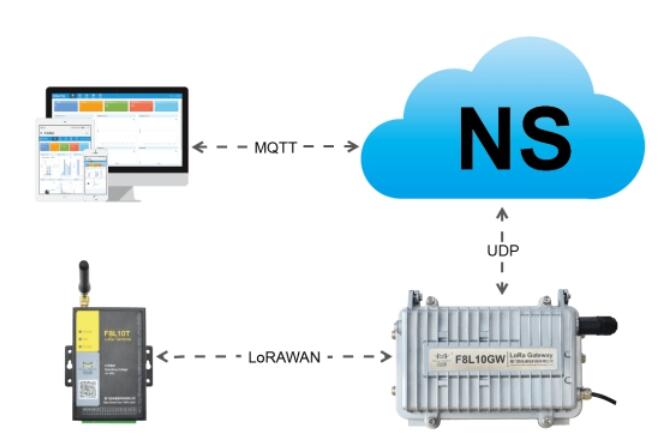A typical LoRaWAN network architecture consists of a terminal, base station, NS (network server), and application server. There is a star network topology between the base station and terminal. Because of LoRa's long-distance nature, single-hop transmission is used between them. The base station forwards the LoRaWAN protocol data between NS, terminals and carries the LoRaWAN data on LoRa radio frequency transmission and UDP respectively. Here is a typical LoRaWAN network architecture diagram:
Xiamen Four-Faith provides LoRaWAN series of the complete terminal (module), LoRa gateway, server communication link solutions, terminal node applications, and client-server applications are implemented by customers themselves.
LoRaWAN Network Architecture Solution & Applications
1. Smart Parking
Real-time monitoring of parking space status, information transparency, eliminate urban parking management confusion
2. Smart Manhole Covers
Real-time monitoring city manhole covers location information for abnormal loss, abnormal open manhole cover, such as breakage status information real-time transmission used for data analysis and early warning.
3. Street Lamp Monitoring
Remote street lamp control, fault, line monitoring, dynamic lighting, energy-saving management.
4. Logistics Tracking
An important requirement for tracking or targeting the market is terminal battery life. Logistics tracking can serve as a practical example of a hybrid deployment. Logistics companies can according to their needs in part networks of locations, can be warehouses or transport vehicles. Portable base stations (LoRa gateways) come into play, while LPWAN networks use gateways/contractors to expand system capacity. Infrastructure is easy to build and deploy.
The operation of factory machines needs real-time monitoring, which can not only ensure production efficiency but also improve manual efficiency through remote monitoring. There are many different types of sensors and devices in automated manufacturing and production in factories. Some scenarios require low-cost sensors with low-power and long-life batteries to track devices and monitor status.
6. Smart Agriculture
Low power consumption and low-cost sensors are urgently needed for agriculture. Temperature and humidity, carbon dioxide, and the application of the sensor such as salinity to agricultural increase production, reduce the consumption of water resources has important significance, such as sensors need to upload the data regularly, and many of the remote farms or farmland did not cover cellular networks, not to mention the 4G/LTE, LoRa is very applicable to such scenes.




















